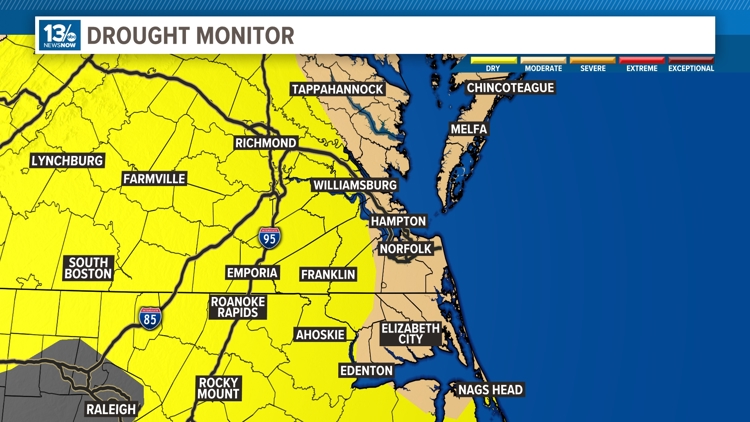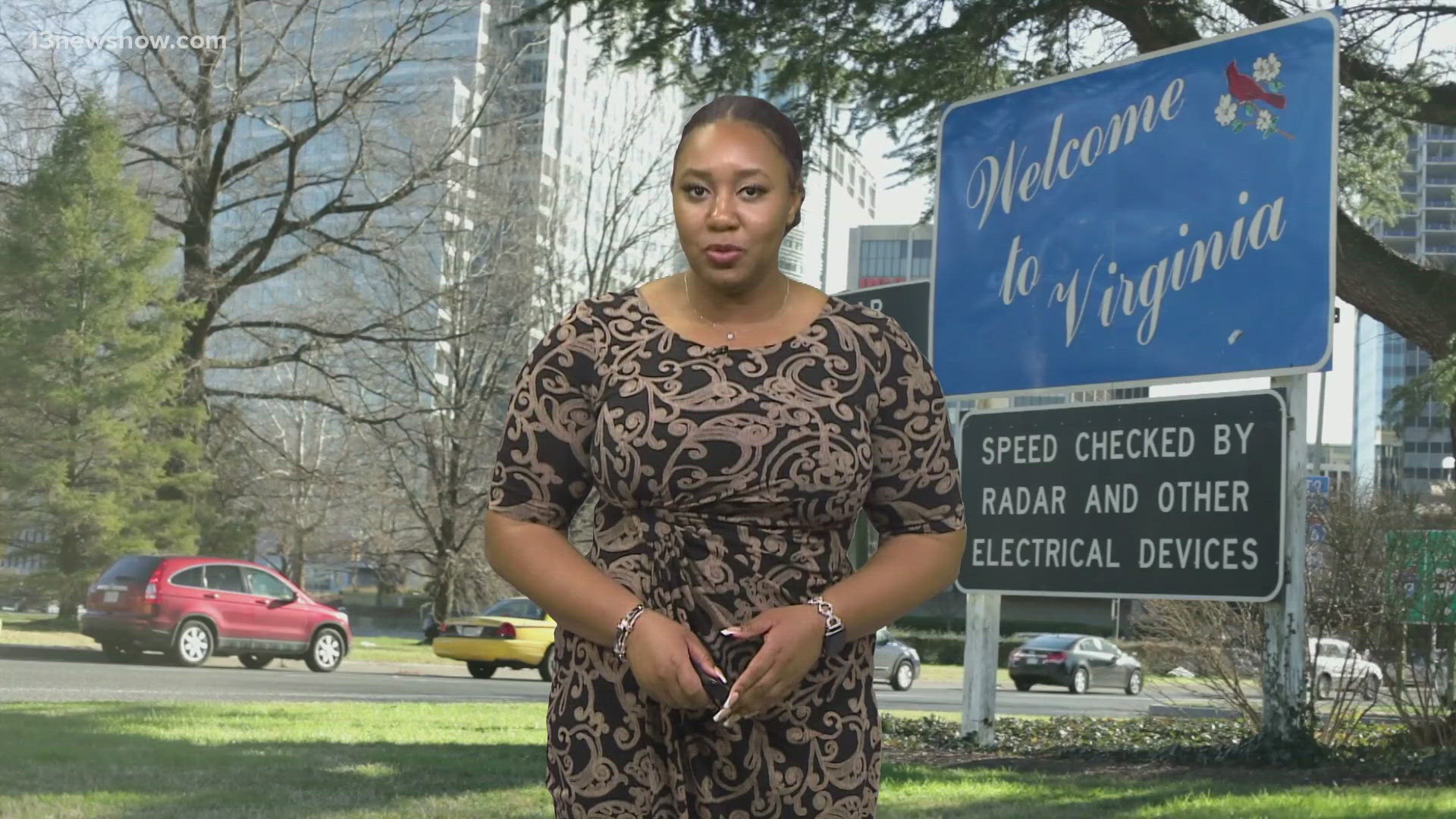NORFOLK, Va. — In southeastern Virginia, we’ve experienced a historic dry spell from October through early November. The lack of rain caused drought conditions to form across the Mid-Atlantic. As of Monday, November 4, no measurable rain has fallen at Norfolk International Airport in 33 days. This ties the record for the all-time longest dry spell at ORF.
After experiencing these dry days, most people, especially farmers, beg for rain. Ironically though, too much rain after an extreme drought can lead to dangerous flooding.
When the ground is too dry and heavy rain arrives, the earth cannot absorb the water because the soil is too compact. The water has nowhere to go so it piles up. If enough rain falls over a short period of time on this dry ground, flash flooding is a strong possibility.
When flash flooding occurs, the best thing to do is to "turn around, don't drown." Driving through flooded roadways can lead to you getting trapped in your car and risking the lives of the first responders who would have to rescue you.
Also, never walk or play in flooded areas. The water may carry debris that could hit and hurt you.
In times when you have advance notice of flood events, evacuate the area or seek higher ground.
According to the October 31 Drought Monitor, about 87 percent of the U.S. is experiencing some type of dry or drought conditions. The Drought Monitor is updated every Thursday.
So, that’s why a lot of rain after an intense dry spell is not always a good thing, especially in a flood-prone area like Hampton Roads.
That's how your weather works!



